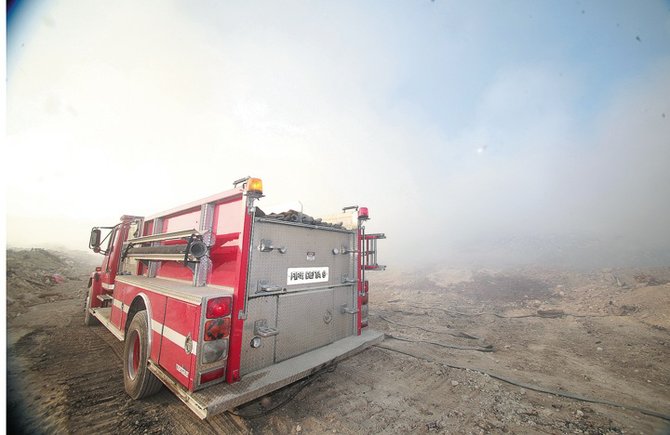FIRE OFFICIALS don't expect the fire at the City Dump to be completely extinguished until the weekend, The Tribune can reveal.
While the smoke and fumes from the burning dump have lessened since Tuesday, Fire Chief Walter Evans said the blaze continues to smolder below the surface.
According to police reports, the Fire Department got a call shortly before noon on Tuesday that the City Dump was ablaze. Firefighters responded and were able to contain the fire quickly.
Police are advising residents of the area to keep their windows closed and do whatever they can to avoid inhaling the thick smoke.
Anyone experiencing breathing problems or headaches, vomiting, nausea or unusual fatigue, should seek medical assistance immediately.





Comments
carlh57 12 years ago
That is extremely optimistic for sure! These type fires burn deep inside the mounds and that requires ALOT of digging to get to them. So please, fire department, do a thorough job of digging this up and dealing with it! We as well as the tourist would greatly appreciate being able to breathe freely again in the near future!
carlh57 10 years ago
In a report published by Waste Management World (leading waste company the the world), they emphatically state (and i am quoting directly from their report below):
"Atmospheric emissions from landfill fires are often dismissed as a nuisance. The following are two examples of just how serious the ‘nuisance’ is: Dioxin emissions: (remember the Bhopal disasterr?) The United Nations Environment Programme (UNEP) considers that for the foreseeable future, non-industrial, uncontrolled combustion, mainly comprised of landfill fires and illegal barrel burning, will remain the most significant source of persistant organic pollutants (POPs) in the form of polychlorinated dibenzo-p-dioxins (PCCDs) and polychlorinated dibenzofurans (PCCFs) in Europe (Thornton, 2002). Gases and Vapors: landfill fires emit a toxic cocktail of ‘Most Wanted’ fugitive gases including formaldehyde, hydrogen cyanide, hydrogen sulfide, nitrogen oxides and many others (OEPA, 2006). Visible smoke might not be visible since compacted waste acts as a good particulate filter, but fugitive gases are able to percolate towards the surface. Emitted smoke is a hazard and has resulted in the imposition of Civil Aviation Authority ‘no-fly’ zones. A particular problem with smoke, which is largely unburned carbon, is particles that have become activated, in the form of an adsorbent, with a huge appetite for mopping-up ‘most wanted’ contaminants. Very small particles, known as Sub PM2.5s (smaller than 2.5 millionths of a meter in diameter) are capable of remaining airborne for days, and together with adsorbed contaminants will pass directly into the bloodstream once inhaled."
Sign in to comment
Or login with:
OpenID